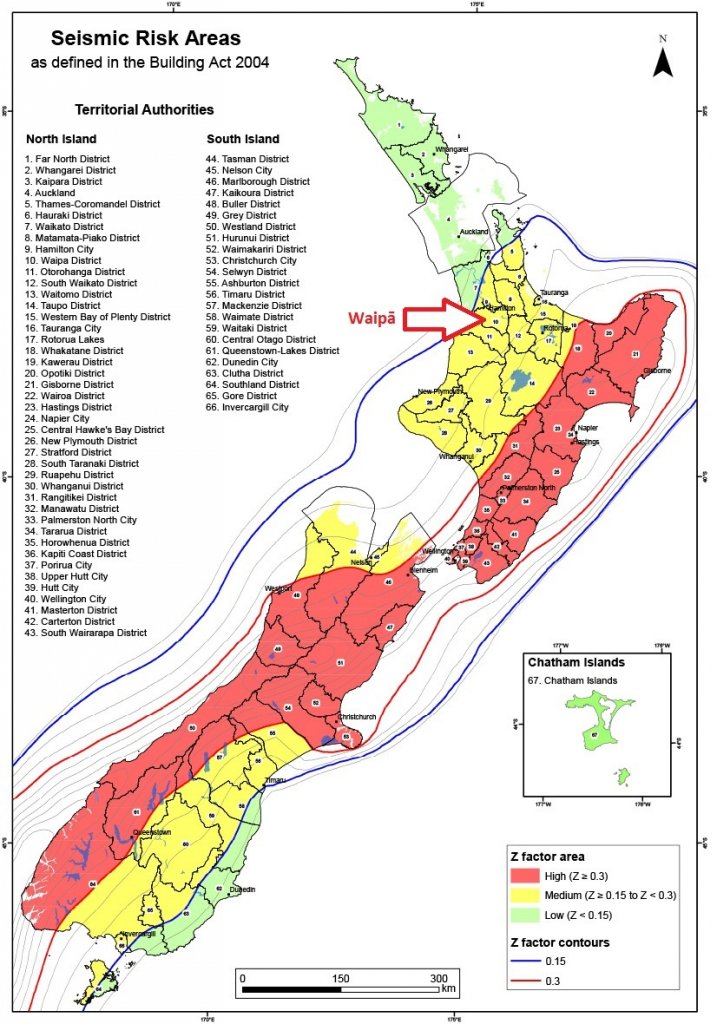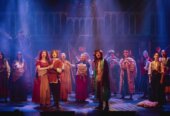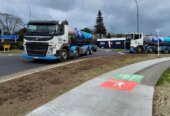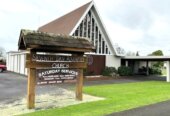With the New Zealand ShakeOut coming up, we thought we’d take a look at where Cambridge sits in the scheme of things ahead of the national earthquake awareness day on October 18.
Cambridge is not classified in the high-risk category for earthquakes, which is good news; according to the Ministry of Business, Innovation and Employment (MBIE) Waipā is in the medium risk bracket. We are part of two strips through the country identified as medium risk that includes Tauranga, New Plymouth, Nelson and Invercargill. High risk areas include the Hawkes’ Bay, Wellington, Blenheim and Christchurch, while low-risk areas are from Auckland north as well as Oamaru and Dunedin in the South Island. As a medium risk area, council needs identify potentially earthquake-prone buildings in the next 10 years, and they must be made safe within the next 25 years. It must do this to comply with the Building (Earthquake-prone Buildings) Amendment Act 2016, which came into force in July 2017 as a result of the Kaikoura earthquake in November 2016.

Based on there being sufficient traffic and the potential for URM to fall, council proposes the following Cambridge thoroughfares be prioritised:
• Victoria St from the roundabout on Queen St to the Cambridge Museum
• Lake St from the junction with Queen St to the roundabout on Victoria St
• Empire St from the junction with Queen St to the roundabout on Victoria St
• Kirkwood St between Lake St and Empire St
• Alpha St between Victoria St and Empire St
• Duke St between Victoria St and the junction with Anzac St.
Some buildings, such as hospitals or schools, could be considered ‘priority buildings’ and will need to be identified within five years and made safe with 12.5 years – half the normal timeframe. Of particular concern is the issue of unreinforced masonry* (URM), building facades which took a devastating toll when they collapsed in the Christchurch earthquake in 2011.
Council is currently working on identifying buildings that could potentially be earthquake prone.
Once those properties have been singled out, council will notify the owners who will then have 12 months to provide an engineer’s report. If the report finds the building is below 34 per cent of the new building standards, then the building will be classified as earthquake-prone and will have to be made safe within the next 25 years (or 12.5 if they are a ‘priority’ building). And a notice informing the public of this will need to be displayed and the building’s details will be uploaded to a national register.
Callum Patton, Earthquake-prone Building Assessor for the council said: “Until we have gone through this process it’s too early to say if we have any unreinforced masonry buildings of concern.”
As part of this identification process, council also needs to identify areas that are considered high pedestrian or high vehicle thoroughfares, and they will do this in consultation with the public. Any URM building that is confirmed as being earthquake-prone on these thoroughfares would be considered a ‘priority building’ and subject to the tighter timeframes for repair.
Council has identified areas it considers high pedestrian or vehicle thoroughfares in the district, and public consultation is running until October 19. Call into council offices to collect submission forms, phone 0800 WAIPADC (924 723) or visit www.waipadc.govt.nz/haveyoursay for submission forms.
Visit www.shakeout.govt.nz for more information about the New Zealand Shake Out on October 19.

* An unreinforced masonry (URM) building is an older style building with brick walls that do not contain steel, timber or fibre reinforcement. URM buildings often have other features like parapets, verandas, balconies, decorative ornaments, chimneys and signs on the front walls that face onto a street or open space. These features increase the risk of a building, or part of a building, collapsing in an earthquake.









